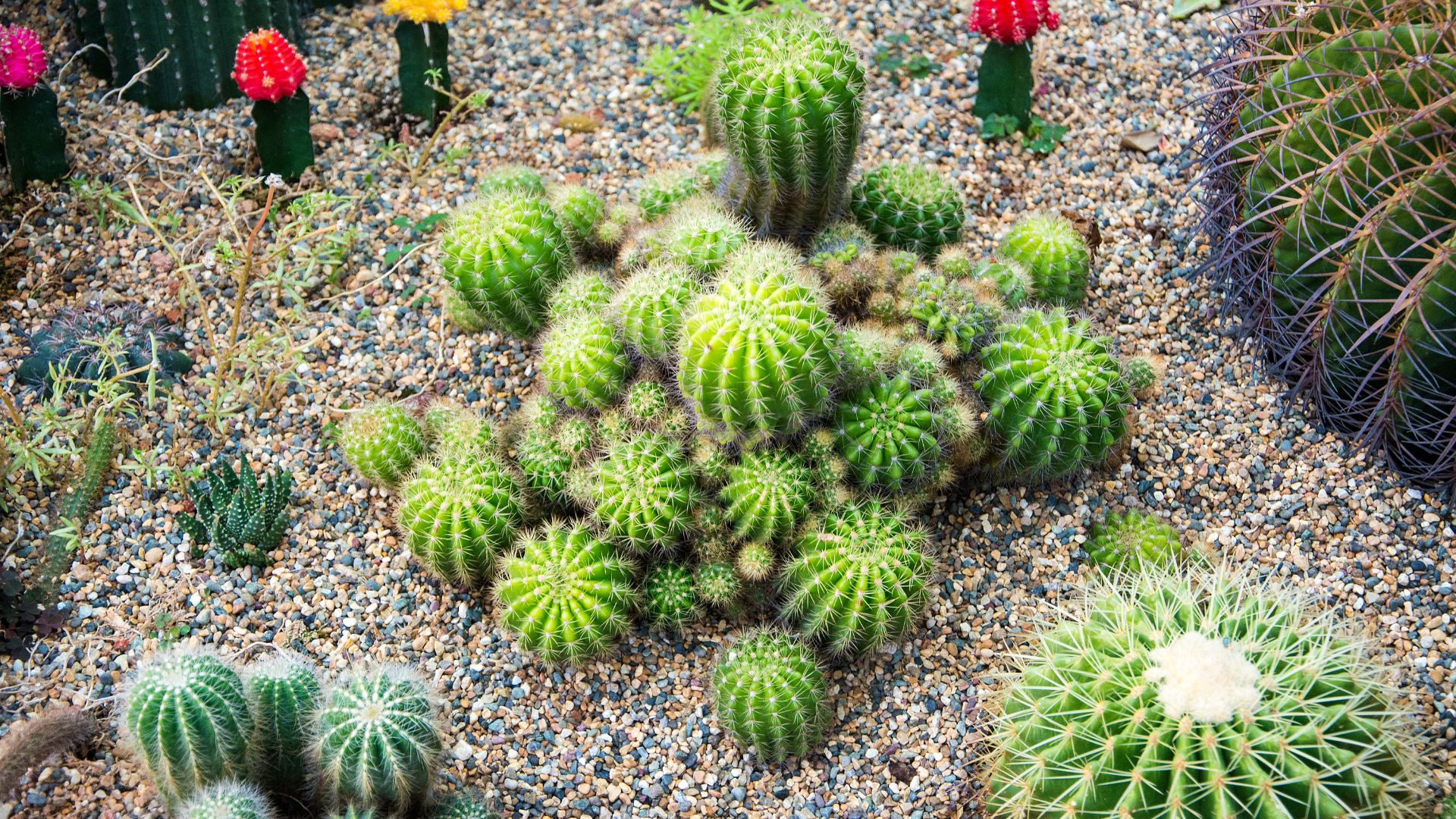Have you ever wondered about the incredible diversity of cactus flowers? If you’re a fan of unique, vibrant flowers and plants that thrive in the harshest of environments, cactus flowers are a must-see. These beautiful flowering cactus plants not only add a pop of color to desert landscapes but also offer a fascinating look at the adaptability and resilience of cactus species.
Whether it’s the showy blooms of the Easter cactus or the fragrant white flowers of old lady cactus, the ricrac cactus, the lady cactus, or the night-blooming varieties, cactus flowers are as varied as they are stunning.
In this article, we’ll dive deep into the types of flowering cactus plants and flowers, from the festive Christmas cactus plant to the flower bloom of the prickly pear cactus, and explore the beauty and significance of each.
Types of Cactus Flowers
Cactus flowers are nature’s resilient wonders, combining stunning beauty with an ability to thrive in challenging conditions. From delicate, pastel pink blooms to bold, fiery hues, each type of flowering cactus showcases its unique charm. Here’s a detailed look into these fascinating species of flowering cactus flowers.
Easter Cactus
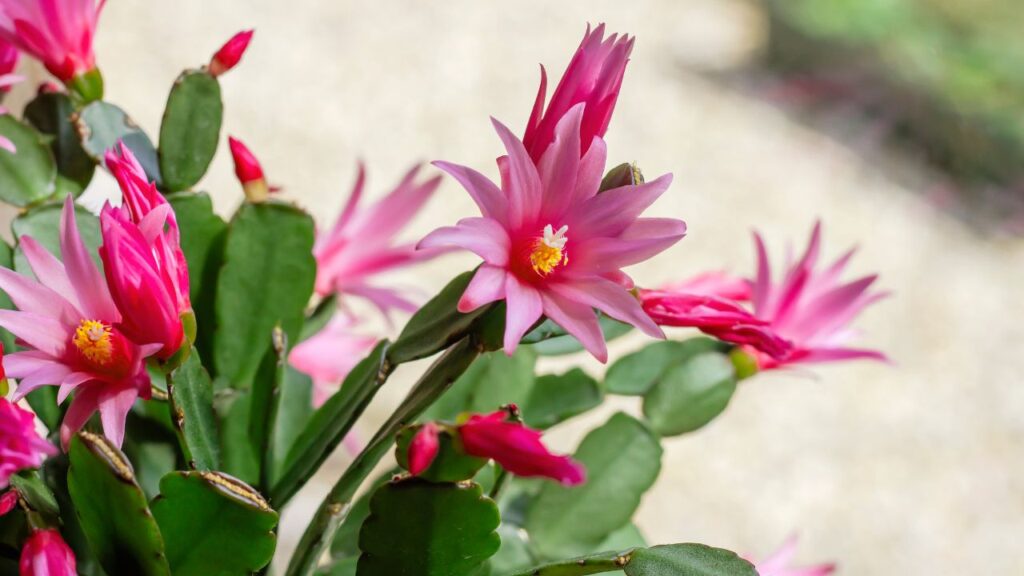
- Scientific Name: Rhipsalidopsis gaertneri
- Key Features: Tubular flowers in pink, red, and white
- Growth Habit: Epiphytic (naturally grows on trees or rocks)
- Flowering Time: Spring, following the Christmas cactus
- Best For: Hanging baskets, indoor décor
The Easter cactus is a delightful addition to any indoor garden. It requires a rest period in cooler temperatures to ensure abundant flowering. Native to the rainforests of Brazil, this flowering cactus also prefers moderate humidity and indirect or direct sunlight, making it perfect for shaded patios or indoor spaces.
Strawberry Hedgehog Cactus
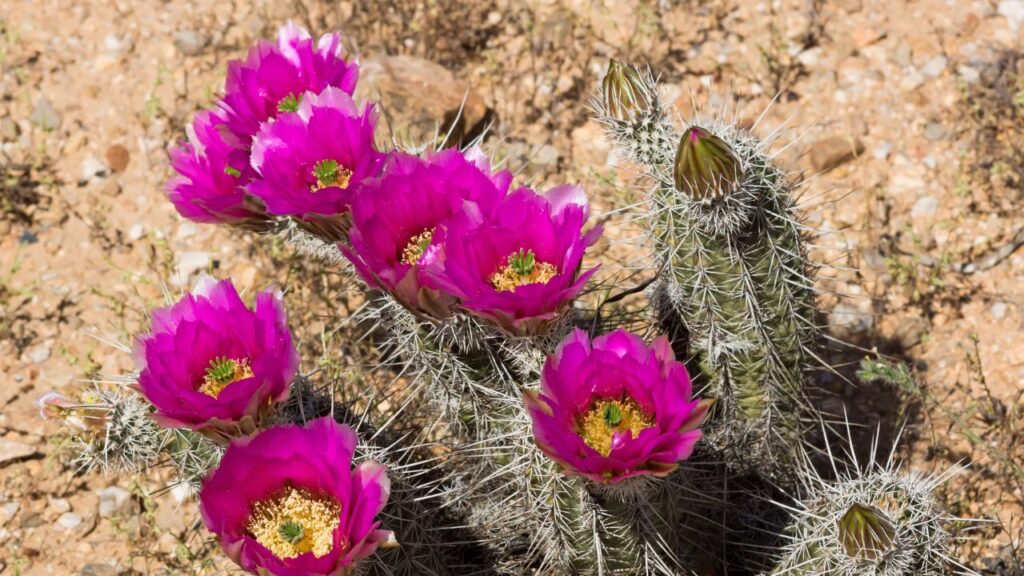
- Scientific Name: Echinocereus triglochidiatus
- Key Features: Globe-shaped cactus with dense spines and orange-red flowers
- Flowering Time: Spring
- Special Feature: Edible fruit resembling prickly pear
- Best For: Desert gardens, sunny locations
The strawberry hedgehog of flowering cactus plants is not just visually striking but also ecologically significant. Its flowers are pollinated by bees and hummingbirds, contributing to the local ecosystem. The bright flowers of many flowering cacti plants open during the day and close at night, during the flowering season, providing a dynamic display in any garden.
Christmas Cactus

- Scientific Name: Schlumbergera bridgesii
- Key Features: Tubular flowers in pink, red, white, and orange
- Growth Habit: Epiphytic (grows on trees or rocks)
- Flowering Time: Late fall to early winter, typically around Christmas
- Best For: Hanging baskets, festive indoor décor
The Christmas cactus is a beloved holiday plant, famous for its stunning, vibrant flowers that bloom just in time for the festive season. Unlike desert cacti, this epiphytic cactus thrives in humid environments and prefers well-draining soil with bright, indirect light.
With proper care, the Christmas cactus can bloom multiple times a year, adding beauty and charm to homes during the colder months.
Star Cactus
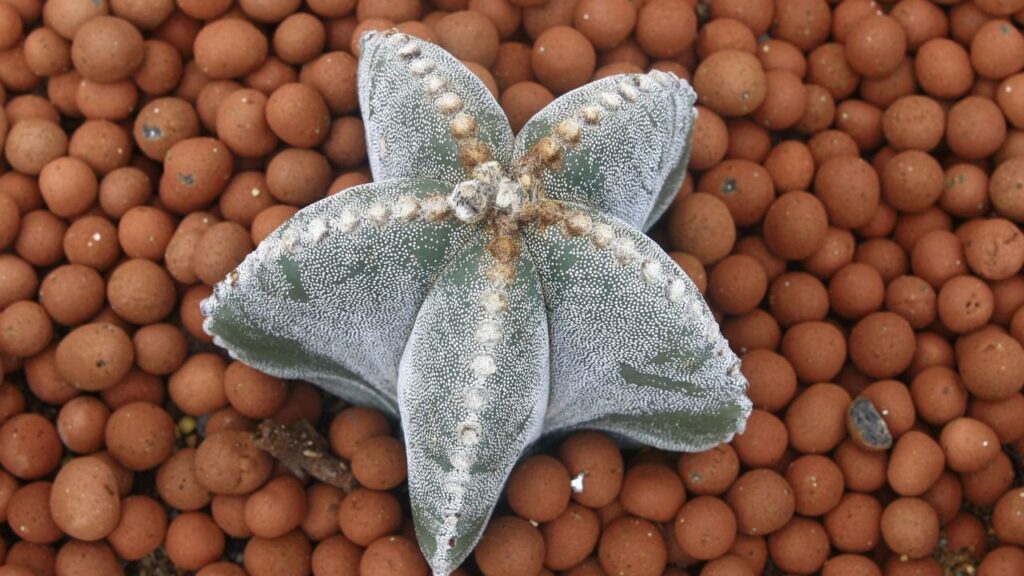
- Scientific Name: Astrophytum asterias
- Key Features: Star-shaped body with yellow tubular flowers
- Flowering Time: Summer
- Best For: Rock gardens, cactus collections
The star cactus thrives in arid environments and is highly sought after by collectors for its symmetrical form. Its seeds are tiny and take a long time to germinate, making propagation a challenge. Despite its delicate appearance, it is highly drought-tolerant, requiring only occasional watering.
Claret Cactus
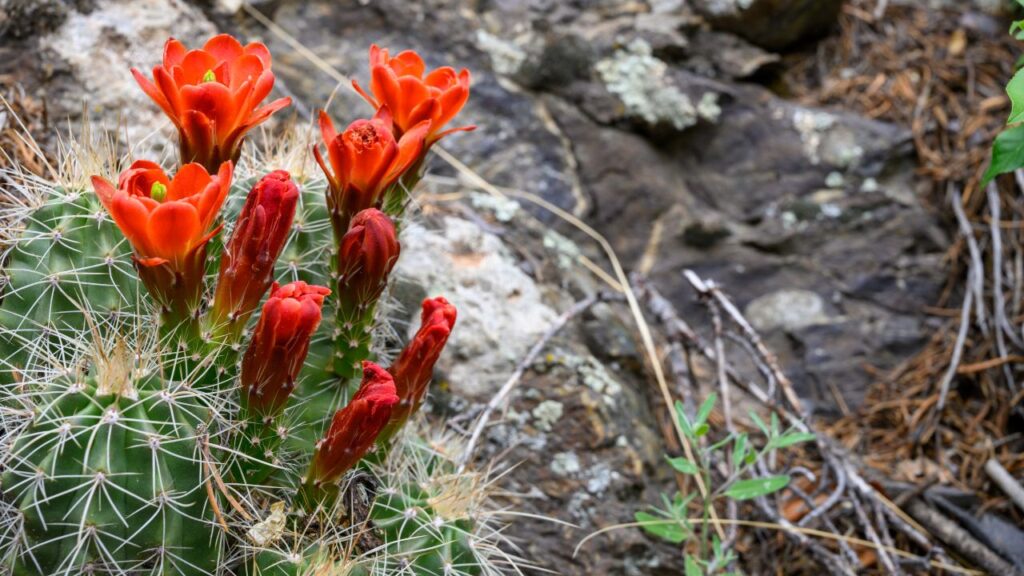
- Scientific Name: Echinocactus horizonthalonius
- Key Features: Dark green stems with vibrant red-orange flowers
- Flowering Time: Spring and summer
- Best For: Low-maintenance desert gardens, container plantings
The claret cactus is known as the devil’s head of cactus flowers” due to its rounded, ribbed body. It produces flowers with a sweet fragrance, attracting butterflies and other pollinators. Its ability to withstand high temperatures makes it ideal for arid, sun-soaked gardens.
Easter Lily Cactus
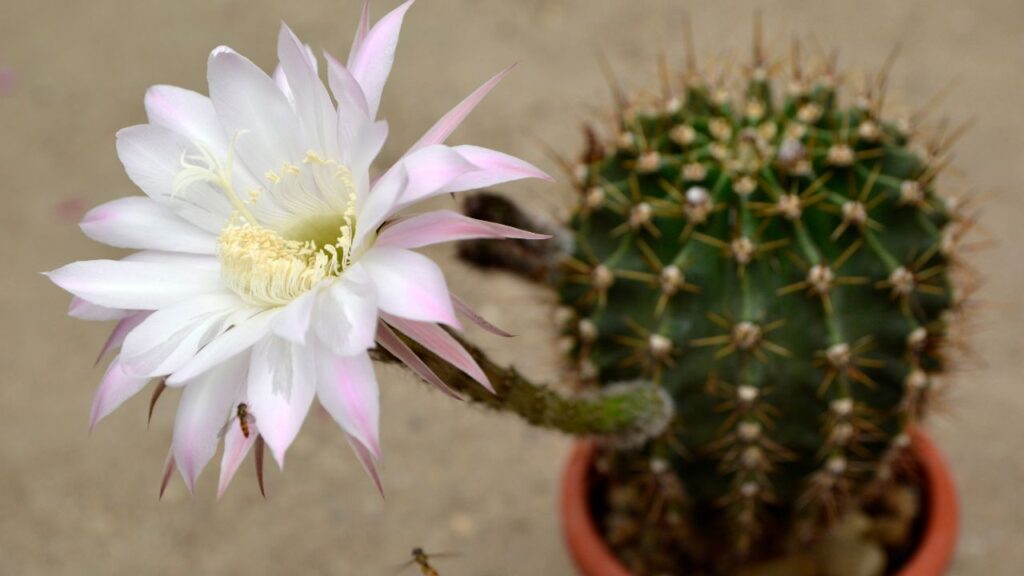
- Scientific Name: Echinopsis subdenudata
- Key Features: Large, trumpet-shaped flowers in white or pale pink
- Flowering Time: Late spring to summer
- Best For: Indoor collections, rock gardens
Native to South America, the Easter lily cactus blooms for just a single day, but its flowers are so large and fragrant that they’re worth the wait. This beautiful cactus is a nocturnal bloomer, with small pink flowers opening at night and closing by morning.
Powder Puff Cactus
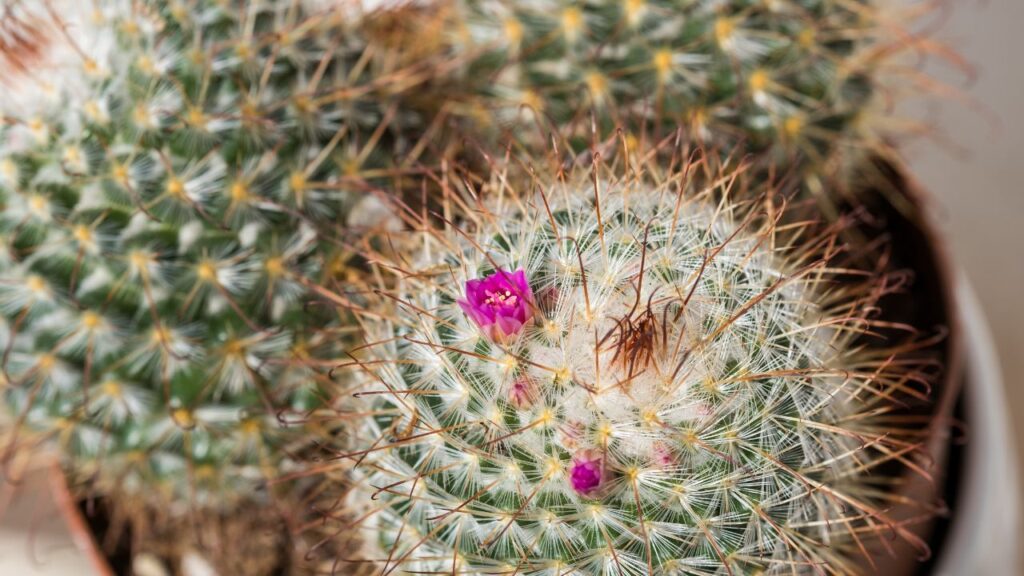
- Scientific Name: Mammillaria bocasana
- Key Features: Dense white spines and small pink puffball flowers
- Flowering Time: Spring, with multiple blooms per season
- Best For: Indoor collections, desert gardens
The powder puff cactus has woolly white spines that give it a fluffy appearance. It is a slow grower but produces small pink flowers that can eventually form dense clusters together, creating a stunning visual effect in a garden or planter. Its flowers attract bees and small insects, making it a pollinator-friendly option.
Peanut Cactus
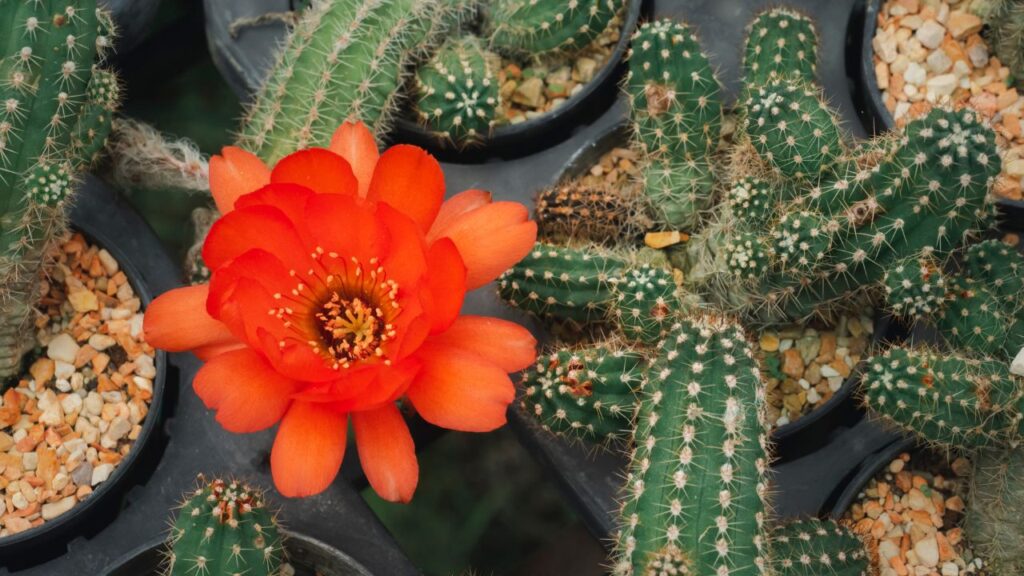
- Scientific Name: Echinopsis chamaecereus
- Key Features: Clumping habit with cylindrical stems and orange-red flowers
- Flowering Time: Spring and summer
- Best For: Small gardens, container gardening
The peanut cactus is a low-maintenance plant, often used as ground cover in rock gardens. Its stems grow in clumps, resembling a cluster of peanuts. It’s highly adaptable and thrives in both outdoor and indoor conditions. Its flowers are long-lasting, making it a vibrant choice for continuous color.
Rat Tail Cactus
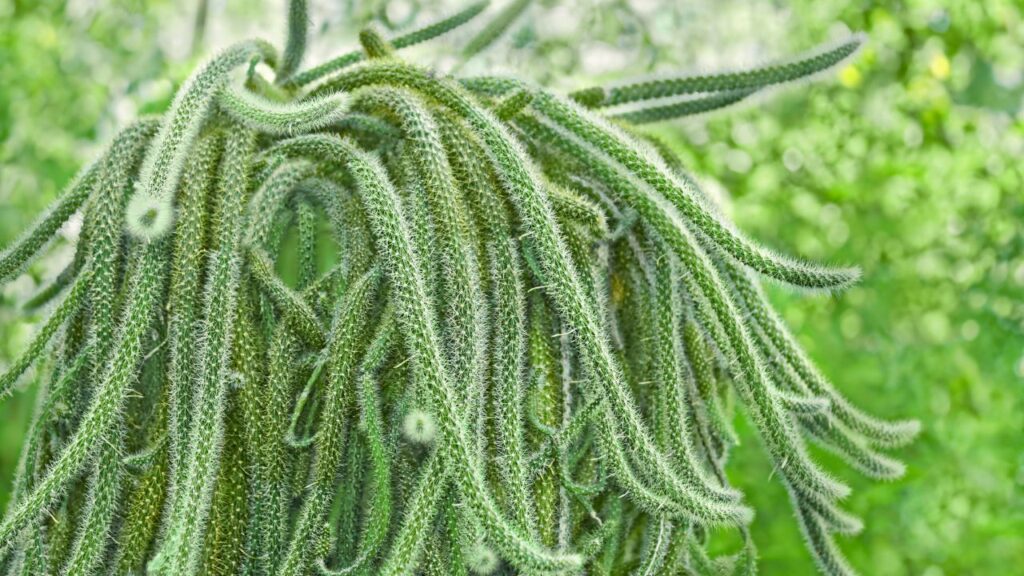
- Scientific Name: Aporocactus flagelliformis
- Key Features: Long, trailing stems and tubular flowers in pink, red, or orange
- Flowering Time: Spring and summer
- Best For: Hanging baskets, sunny windowsills
The rat tail cactus is native to Mexico and thrives in warm climates. Its long, trailing stems can grow up to 4 feet six inches tall, making it an excellent choice for vertical gardening. It blooms profusely when well-fed and exposed to bright light. Its flowers remain open for several days, adding to its ornamental value.
Golden Barrel Cactus
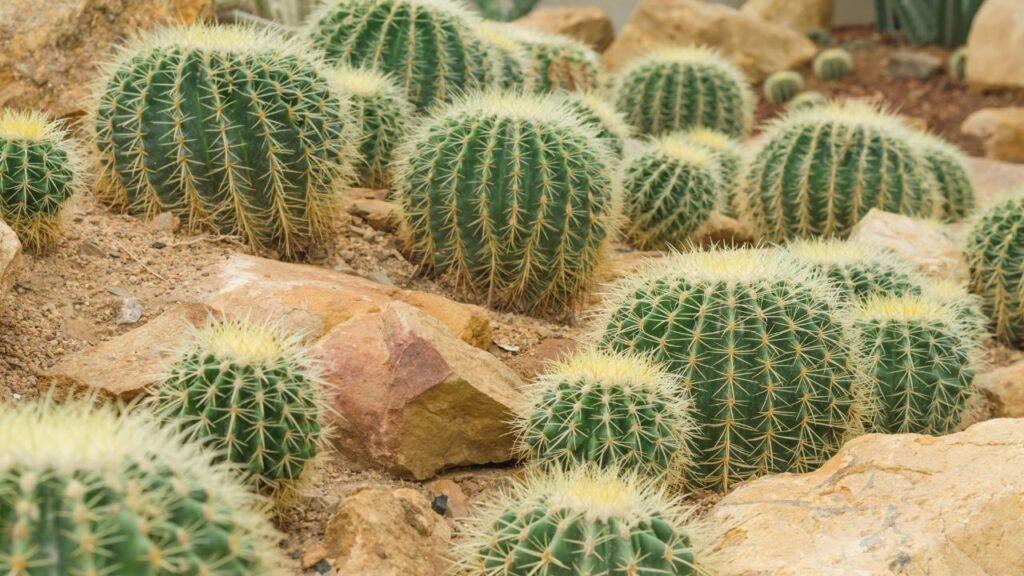
- Scientific Name: Echinocactus grusonii
- Key Features: Globe-like body with yellow spines and flowers
- Flowering Time: Late spring to early summer
- Best For: Desert gardens, xeriscaping, rock gardens
The golden barrel cactus, often referred to as the “mother-in-law’s cushion,” is a resilient and hardy plant with golden yellow spines that can live for decades. Its golden-yellow flowers grow in a crown-like ring on top of the cactus, creating a striking contrast against its sharp spines.
Pincushion Cactus
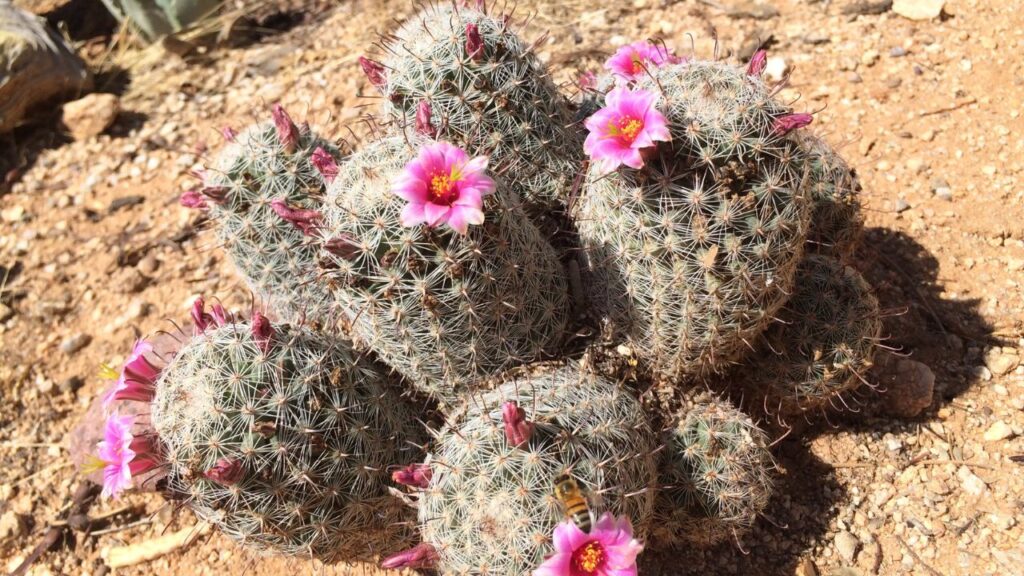
- Scientific Name: Mammillaria species
- Key Features: Dense spiny clusters with crown-like flowers in pink, yellow, or white
- Flowering Time: Late spring to early summer
- Best For: Container gardens, hanging baskets, rock gardens
The pincushion cactus is prized for its compact size night-blooming flowers and ability to produce multiple blooms at once. It is a magnet for pollinators like bees and butterflies. This species is incredibly versatile, thriving in both outdoor gardens and small indoor pots.
Saguaro Cactus

- Scientific Name: Carnegiea gigantea
- Key Features: Towering, tree-like cactus with white, fragrant flowers
- Flowering Time: Late spring to early summer, blooms at night
- Best For: Large desert gardens, iconic landscapes
The saguaro cactus is one of the tallest cacti, reaching heights of up to 40 feet. Its flowers, pollinated by bats and insects, are a vital part of the desert ecosystem. Despite its size, the saguaro grows slowly, taking up to a century to reach full maturity.
How to Care for Cactus Flowers
Caring for cactus flowers involves understanding both the needs of the cactus itself and the flowers it produces. Here are some essential tips for keeping cactus flowers healthy:
Provide Plenty of Light:
Cacti generally thrive in bright, indirect sunlight. If your cactus is indoors, place it near a south or west-facing window. Outdoor cacti should be kept in full sunlight for several hours a day.
Water Properly
While cacti are drought-tolerant, they do need water to bloom. Water your cactus thoroughly when the soil is completely dry, but be sure not to let it sit in water. Overwatering can lead to root rot, which can harm both the plant and its flowers.
Avoid Excessive Humidity
Cacti are adapted to dry environments, so avoid placing them in overly humid conditions. Good airflow is important to prevent mold or mildew from developing on the flowers.
Ensure the Right Temperature
Most cacti bloom in warmer temperatures. During the growing season (spring and summer), temperatures between 70–95°F (21–35°C) are ideal. During the winter, reduce the temperature slightly to encourage blooming.
Fertilise Occasionally
Feed your cactus with a balanced, low-nitrogen fertilizer during its growing season (spring to summer). This supports healthy growth and vibrant blooms. Be careful not to over-fertilize, as this can lead to weak growth and fewer flowers.
Prune Dead Flowers
After your cactus blooms, remove dead or wilted flowers. This helps the plant focus its energy on producing new growth and blooms, rather than sustaining spent flowers.
Repot When Needed
If your cactus becomes root-bound or its pot becomes too small, it may not bloom as well. Repotting every few years into a slightly larger pot can give it more space to thrive.
Conclusion
Flowering cacti thrive best in bright, sunny locations with minimal water, making them ideal for xeriscaping and low-maintenance gardens. Cactus flowers are a true testament to nature’s resilience and adaptability. From the bold red blooms of many cacti the claret cactus to the soft pink puffball flowers of the powder puff cactus, these plants offer a remarkable variety of shapes, sizes, and colors. Each species brings its unique beauty and ecological role, making them a beautiful addition to any collection or garden.
Whether you’re an experienced gardener or a novice enthusiast, these flowering cacti are sure to brighten your space with their vibrant displays.
Explore their diversity, learn their care requirements, and enjoy the stunning blooms they provide for years to come.

